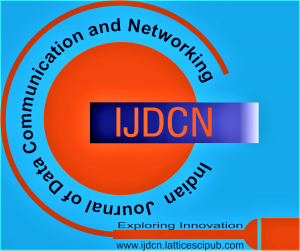![]()
VANET: Framework, Challenges and Applications
Kalaivani D
Dr. Kalaivani D, Department of Information Science and Engineering, New Horizon college of Engineering, Bengaluru, India.
Manuscript received on 17 March 2021 | Revised Manuscript received on 27 March 2021 | Manuscript Accepted on 15 April 2021 | Manuscript published on 30 April 2021 | PP: 10-15 | Volume-1 Issue-2, April 2021 | Retrieval Number: 100.1/ijdcn.B5002021221 | DOI: 10.54105/ijdcn.B5002.041221
Open Access | Ethics and Policies | Cite | Mendeley | Indexing and Abstracting
© The Authors. Published by Lattice Science Publication (LSP). This is an open access article under the CC-BY-NC-ND license (http://creativecommons.org/licenses/by-nc-nd/4.0/)
Abstract: Vehicular Ad-Hoc Network (VANET) is one of the essential research field because of large increase in usage of vehicles on road. Many VANET applications are employed to improve road safety conditions, vehicle traffic, an emergency warning to vehicle drivers, collision avoidance and other non-safety applications for comfort. The main aim of these applications are to modernize the various processes associated with road traffic, vehicles, drivers, passengers and pedestrians by implementing smart transport systems. This study is to implement an intelligent vehicular transport design to improve the road safety, navigation and comfort. VANET communication technology is a combination of mobile vehicles with ad hoc networks. The purpose of this research is to predict and prevent road accidents by transmitting emergency messages using vehicular network technology. While transmitting emergency messages, the VANET has various challenges. They are High mobility of the vehicles, Dynamic topology, Wireless communication, Minimum transmission delay, Connectivity of the network, optimal usage of transmission power. These challenges leave the vehicular networking disconnected and make an exchange of information very difficult. Even though many researchers have done significant work during the last decade on vehicular networking, some problems have not yet been solved.
Keywords: Clustering, Intelligent Transport System, Medium Access Control, Routing Protocols, Vehicular Ad-hoc Networks, Wireless Access in Vehicular Environment.
Scope of the Article: Networks: Adhoc and Sensor Networks, High Speed Networks, Mobile and Wireless Networks
